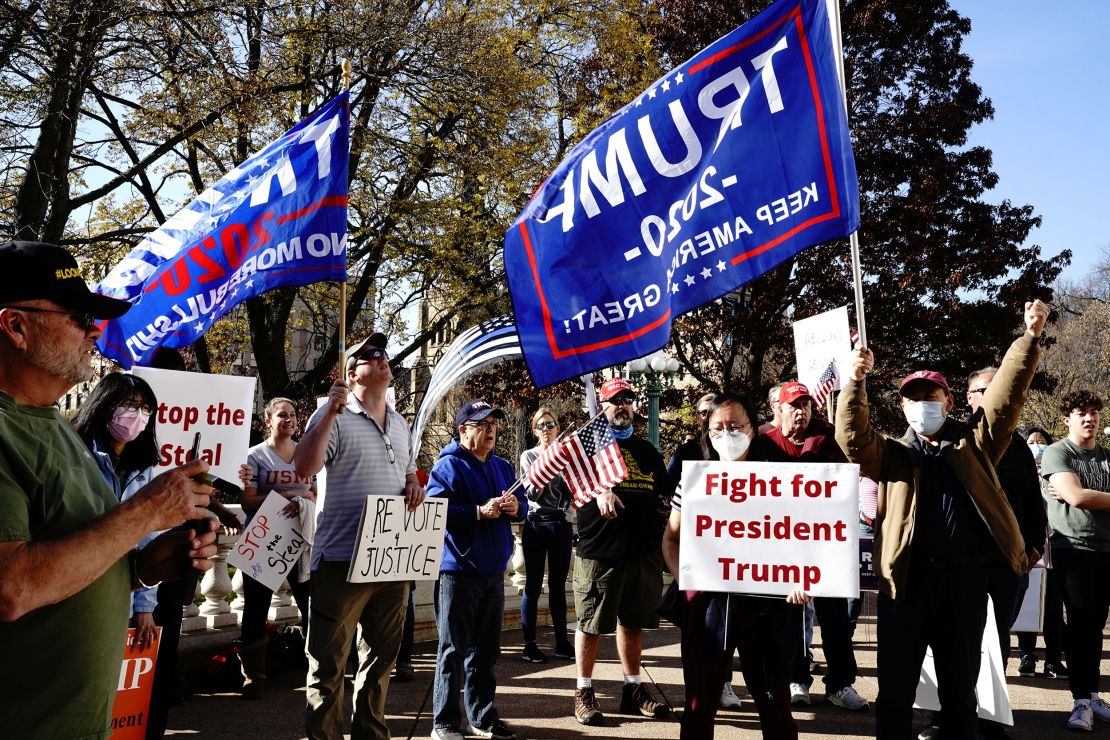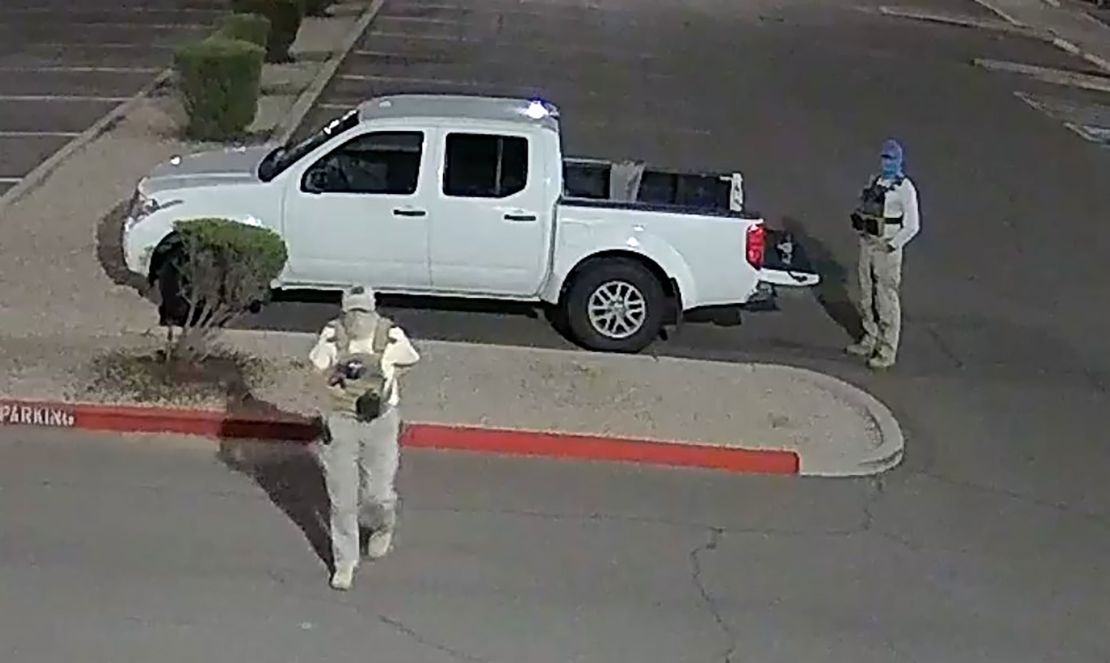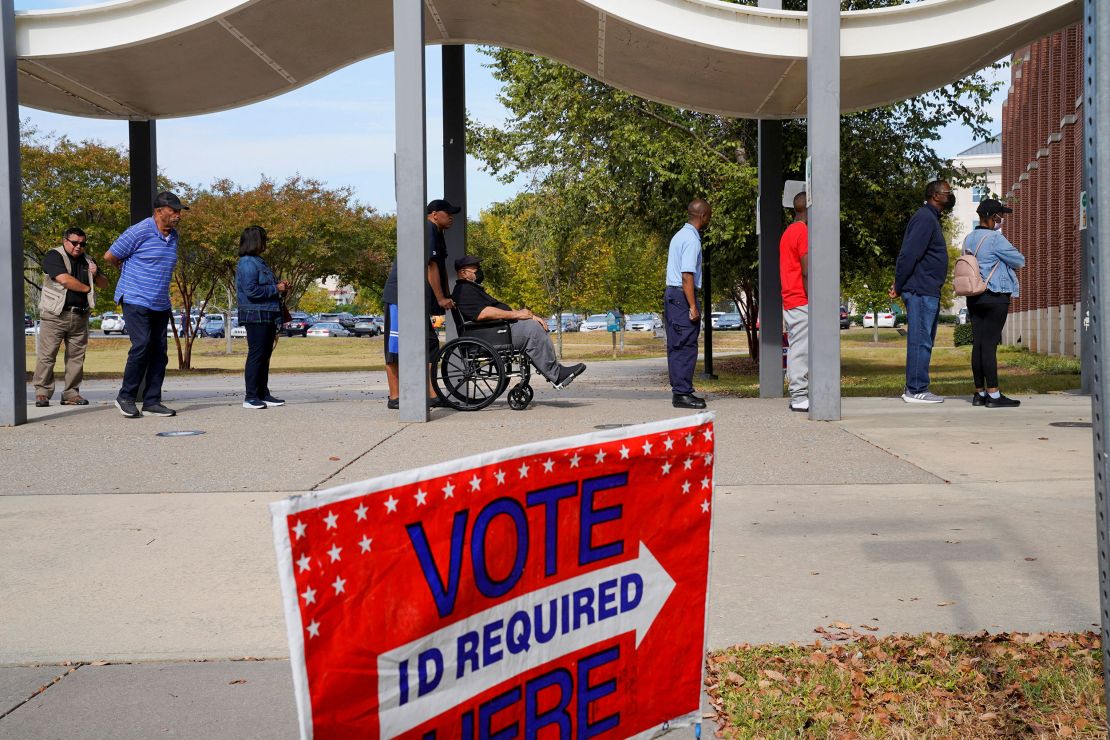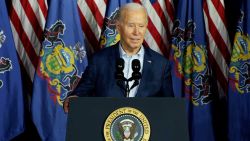Millions in federal dollars could have gone to protect election workers and improve the physical security of their offices, but in a classic tale of bureaucratic red tape, most of it remains untapped less than two weeks before the midterm elections.
The botched funding opportunity comes as election officials across the country have faced an unprecedented wave of violent threats stemming from conspiracy theories about the voting process. Now, things like additional lighting or security guards for some election offices may not be in place for Election Day on November 8.
“Our security here is a joke,” said Scott McDonell, the Democratic clerk for Dane County, Wisconsin’s second largest. His office is a block from the state capitol building in Madison, where thousands of people have previously gathered to protest the 2020 election results. McDonell worries that people “could walk right in” to confront him.
In April, the Department of Homeland Security reviewed the security of McDonell’s office and found glaring shortcomings, including doors within the facility that visitors could pass through unchecked, according to the DHS assessment obtained by CNN. Yet, until CNN told him about it, McDonell said he was unaware of a DHS grant program that has in recent years made millions of dollars available to state and local government offices for various security and counterterrorism projects to bolster their physical security.
Instead, Dane County plans to spend $12 million in county money to move to a more secure facility next year.
“Everyone agrees that something has to be done,” McDonell told CNN. “A lot of it is the employees. They have to feel safe on the job.”
Battleground vulnerabilities
The problem is particularly acute in battleground states, where lies about voter fraud have taken root following former President Donald Trump’s failed efforts to overturn the 2020 election. Just seven battleground states — Arizona, Colorado, Georgia, Michigan, Nevada, Pennsylvania and Wisconsin — account for nearly 60% of all threats of physical violence that election workers have reported to a Justice Department task force.
CNN reviewed data since 2020 from two federal grant programs run by the departments of Justice and Homeland Security worth hundreds of millions of dollars that election officials — along with a range of other state and local government agencies — are eligible to apply for to protect themselves from physical threats. In those seven battleground states, CNN identified only a handful of grant expenditures worth a combined total of a little more than $1 million that were dedicated to physical security for election officials.

The dataset is admittedly incomplete. Georgia officials declined to break out numbers pertaining to money spent on physical security and responded to only one public records request for funding data. Pennsylvania did not have records distinguishing between cyber and physical security outlays.
Funding for elections can take years to implement. Some of the proposed projects for fiscal 2022 may not be ready until the 2024 election. And while last-minute security upgrades like fencing and cameras can make a difference, what is clear is that federal funding is falling far short of what election officials in battleground states say is needed.
Michigan Secretary of State Jocelyn Benson, whose family was harassed during the 2020 elections, said the blame isn’t always on the feds, and that state officials need to do a better job communicating their needs.
“Oftentimes we see a breakdown where states will receive the funds and they won’t make it to the locals,” Benson told CNN. “And that then makes it harder for us to get the federal funding in future rounds because it doesn’t always reach where it has to reach.”
The failure to disperse millions in funding shows how the federal government has struggled to adapt two key grant programs which have long focused on other crime-fighting issues to the physical security needs of election workers, at a time of unprecedented threats against them.
Interviews with state and local election officials and groups representing them reveal some frustration over the process of applying for the DOJ and DHS money, which some describe as confusing and overly complicated. Others were unaware of the grant programs and lamented a lack of communication from the agencies in charge of the money.
In some cases, word is still getting out about the programs. One Wisconsin county election official, Meg Wartman, told CNN that she learned more about one of the federal programs this month and shared that information with municipal clerks who might need it.
CNN requested a breakdown from DHS of election security projects through the grant program for the last three years. A DHS spokesperson responded by providing high-level spending figures for fiscal 2022 that did not distinguish between physical and cybersecurity.
Pulling money from the DMV
To be sure, federal money has made its way to local elections offices to pay for upgraded security, including millions of dollars administered by the Election Assistance Commission, records show. And some of the DHS grant money has been spent, according to information obtained by CNN.
Arizona’s Maricopa County, where angry mobs gathered to protest the 2020 election results, is spending some of the $148,033 in DHS funding it received this fiscal year on locks and lighting for the recorder’s office. Michigan got about $211,000 in fiscal 2020 to spend on radios and other security measures related to elections.

In Oklahoma, as a precaution election boards across the state are using DHS money to install panic button applications on their phones for summoning the police, according to Hiram Tabler, director of the Oklahoma Office of Homeland Security.
But in other cases, federal, state or county bureaucracy has gotten in the way, leaving states and localities to spend the money themselves.
In El Paso County, Colorado’s largest, Chuck Broerman oversees not only elections, but also motor vehicles and marriage certificates. Broerman, a Republican, said his office had pulled money from the DMV account to pay for tens of thousands of dollars worth of security cameras and other protections for election officials.
“We’ve had calls where people would say that blood would be on our hands,” Broerman said when asked if he or his colleagues had received death threats.
Broerman told CNN he was unaware of the DHS funding program, but probably wouldn’t have applied for it anyway because of El Paso’s financing structure that requires taxpayers to be reimbursed for federal grants.
The Philadelphia City Commission, which oversees elections in the city, is spending about $131,000 in federal money this year but that only covers fencing around the commission, according to Philadelphia City Commissioner Lisa Deeley. For the lighting and security gate that security appraisers also recommended, the commission will draw on $175,000 in state funds. Regardless of how it’s paid for, the security upgrade won’t be ready for the midterm elections.
Deeley said violent threats were taking a toll on her colleagues across the country.
“It’s unfair to have to work with that level of anxiety because you never know if that caller on the other line — they might be the one caller that means it,” she told CNN. “We are hoping for the best, preparing for the worst.”

‘Fighting ghosts of the last election’
Ever since Russian hackers probed voter registration records in multiple states in 2016, election security has often been viewed through the lens of cyber threats. State and local governments have spent many millions of dollars on cybersecurity. And while hackers remain a threat, the much more acute challenge is the surge in physical threats to election workers from people who deny the legitimacy of the 2020 election.
“We are always fighting the ghosts of the last election, so it is nearly impossible to predict where overtime might be necessary or where other physical security-related needs may arise,” Amy Cohen, the executive director of the National Association of State Election Directors, told Congress in August.
Confusion about the DHS and DOJ grant programs has been key to their low uptake.
“A lot of times they’re not even aware that this funding is available or who they need to talk to be able to get some of these funds for election security needs,” said Derek Tisler, counsel at the nonpartisan Brennan Center for Justice, a policy institute.
Not only are state and local election officials often unaware of the funding, the process to secure the money is often arduous. Requests for federal grant money have to go through state homeland security offices, which are the go-between with DHS — an arrangement that analysts say can create bureaucratic logjams.
A patchwork of results
Along with the grant programs run by DHS and DOJ, a third program run by the Election Assistance Commission also funds election security projects for state and local officials. That program, which is focused just on election security, has been more effective in delivering millions of dollars to election officials. Sources tell CNN that is largely because elections officials are more familiar with it.
A review of public records of money allocated to battleground states from all three programs reveals a patchwork of results and suggests that the DOJ program has been least effective in distributing funds for election security.
The Justice Department program produced a single grant worth $241,000 in the last three years related to the physical security of elections, according to CNN’s review. The program offers states $285 million in funding this fiscal year for a range of crime-fighting issues, including election-related threats.
But many election officials only learned in January that the DOJ program could be used to guard against violent threats. That month, after election officials asked for clarity, the DOJ issued a memo stating that the grant program could be used to “deter, detect, and protect against threats of violence” to election officials. Still, that clarity hasn’t led to much of an increase in the use of that money. State agencies that administer the grants reported only a few requests related to election security since then across the entire country, Justice spokesperson Joshua Stueve told CNN.

Colorado received the sole grant of $241,000 in funding through the Justice Department program, some of which was used for personal security for Colorado Secretary of State Jena Griswold, her office said. This month, a Nebraska man was sentenced to 18 months in prison for threatening Griswold on social media.
But a spokesperson for Griswold’s office said the grant program is so cumbersome, the office won’t apply for more funding until “there are changes to the way the funding is approved and awarded.”
The DHS grant program has had a bit more success. Homeland Security Secretary Alejandro Mayorkas announced in May that election security would be one of the “priority areas” for $1 billion in DHS grant money available this fiscal year. But with just weeks to go before the election, only a small portion of that money has been allocated toward physical security of election officials among the battleground states. (The application window is still open in some states.)
In addition to Arizona’s Maricopa County, CNN found DHS-funded projects, totaling $560,000 in Colorado in 2020, whose scope included some physical security issues for election infrastructure.
Nevada’s Clark County, home to Las Vegas, spent $291,7000 in DHS funding on physical security measures, which could include security cameras or fencing, for election facilities in fiscal 2020, according to Gail Powell, spokesperson for the Nevada Division for Emergency Management and Homeland Security.
Connecticut has put at least $1 million DHS grant money toward election security measures each of the last three years, a portion of which went toward physical security, according to Brenda Bergeron, deputy commissioner in the Connecticut Department of Emergency Services and Public Protection. Asked for specifics on how the money was spent, Bergeron declined to elaborate, citing security concerns.
The third program, run by the Election Assistance Commission and focused exclusively on election security, has been the most consistent in providing election officials with security money since 2020. Some of the $8 million in EAC grants that Michigan distributed this year could allow clerks to do things like install bullet-proof glass in election offices, Michigan Secretary of State Jocelyn Benson told CNN.
“[W]hat we need the most, which is greater federal protections against things like doxing and harassment, and more funding for election security and the security of election officials, both of those things remain unattained,” Benson told CNN.



















